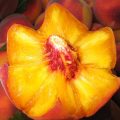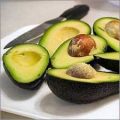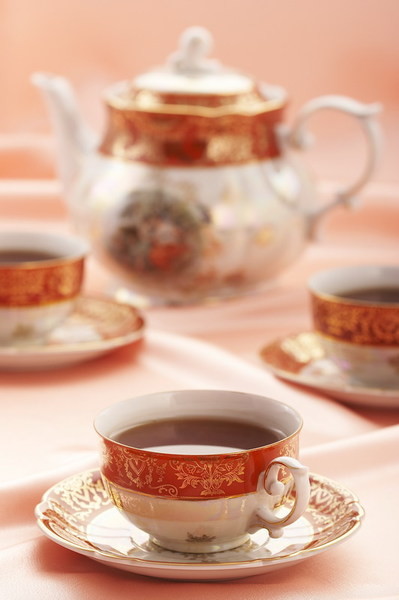 How to choose tea
How to choose tea
The pack contains a whole tea bush
Currently, about 100,000 are imported into our country from abroad.160 thousand tons of tea. And Russia produces about 13 thousand tons per year. We clearly do not drink all this amount of tea, which can be judged at least by the fact that the packs and boxes are clearly lying on the shelves and are often sold expired. When buying tea, you need to be careful also because, according to the State Trade Inspectorate of the Russian Federation, 44% of imported tea is currently rejected. By the way, it is believed that only the first and highest grades are imported to us from abroad - it is unprofitable to sell the second here, the profit is small. On packs of the highest grade you can find the inscription "Best quality", on packs of the first - "Quality # 1". But this is not a fact, because teas are often counterfeited. Instead of the highest and first, you can buy the third grade, where pieces of wood, fibers, dust, granules and tea leaves of different sizes are clearly visible. There is even a joke among tasters: they say that abroad they don’t know that good tea cannot be made from the branches and roots of a tea bush. In any case, when buying, you need to be on the safe side and remember a few rules of choice.
Spotted lion and elephant with a long trunk
Experience has shown that tea is less likely to be counterfeitedtin cans, as well as porcelain and other expensive gift packaging. This is beyond the capabilities of counterfeiters. Strongly flavored expensive teas that are sold by weight also do not seem to be suspected of "leftism". However, it is very easy to counterfeit cardboard boxes and paper bags. To avoid buying a surrogate, study carefullylabel. From my own experience I can say: very often you come across more than strange inscriptions. For example, it is believed that green tea is rarely counterfeited, but in a very good store I was offered a cardboard box with hieroglyphs, where in Russian there was only one phrase: "famous Chinese tea". When I asked where the company, address, variety, trademark, expiration date were, I was given a simple answer: "We have direct deliveries". By the way, in the same store I found a pack with an equally promising inscription: "a mixture of the best varieties of Indian tea". Here, many packages did not indicate what kind of tea they contained - leaf or granulated. The second, by the way, is of lower quality, so the buyer should know what he is spending money on. And finally, this excursion to a specialty store ended with me finding a small jar with the indication “high-mountain” - such teas are considered select, the price for them is quite high. But I was lucky, the drink turned out to be excellent. Many tea lovers have probably read or heard about “white eyelashes” - three upper leaves - and “tips” - buds, from which the highest grade of tea is supposedly prepared. But legend is one thing, and life is another. In fact, the highest and first grades of tea are produced from mature leaves. Tea from more delicate ones is better, from coarse ones - worse. If the harvesting is not done manually, but with a combine, everything is used without sorting. The bush is exposed, the branches often break, sometimes both the stem and the roots end up in processing. Unfamiliar tea should be poured out on a white sheet of paper and examined to see what it consists of. Smooth leaves indicate high quality, and various debris, dust, crumbs, fibers, uneven tea leaves, naturally, indicate low quality. By the way, the name "large-leaf tea" does not mean that it is cut from large leaves and, therefore, is bad. On the contrary, when brewed, the tea leaves often unfold into a full leaf and give an excellent taste and aroma. And the name "small-leaf" does not mean that this tea is made from small leaves. The leaf is simply finely chopped and therefore makes the brew stronger, but less tender and tasty.
To avoid buying a surrogate, study carefullylabel. From my own experience I can say: very often you come across more than strange inscriptions. For example, it is believed that green tea is rarely counterfeited, but in a very good store I was offered a cardboard box with hieroglyphs, where in Russian there was only one phrase: "famous Chinese tea". When I asked where the company, address, variety, trademark, expiration date were, I was given a simple answer: "We have direct deliveries". By the way, in the same store I found a pack with an equally promising inscription: "a mixture of the best varieties of Indian tea". Here, many packages did not indicate what kind of tea they contained - leaf or granulated. The second, by the way, is of lower quality, so the buyer should know what he is spending money on. And finally, this excursion to a specialty store ended with me finding a small jar with the indication “high-mountain” - such teas are considered select, the price for them is quite high. But I was lucky, the drink turned out to be excellent. Many tea lovers have probably read or heard about “white eyelashes” - three upper leaves - and “tips” - buds, from which the highest grade of tea is supposedly prepared. But legend is one thing, and life is another. In fact, the highest and first grades of tea are produced from mature leaves. Tea from more delicate ones is better, from coarse ones - worse. If the harvesting is not done manually, but with a combine, everything is used without sorting. The bush is exposed, the branches often break, sometimes both the stem and the roots end up in processing. Unfamiliar tea should be poured out on a white sheet of paper and examined to see what it consists of. Smooth leaves indicate high quality, and various debris, dust, crumbs, fibers, uneven tea leaves, naturally, indicate low quality. By the way, the name "large-leaf tea" does not mean that it is cut from large leaves and, therefore, is bad. On the contrary, when brewed, the tea leaves often unfold into a full leaf and give an excellent taste and aroma. And the name "small-leaf" does not mean that this tea is made from small leaves. The leaf is simply finely chopped and therefore makes the brew stronger, but less tender and tasty.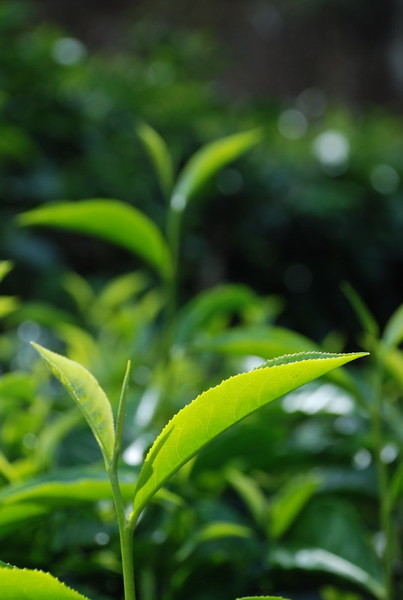 And where do the "white eyelashes" go?When harvesting completely, they can, of course, end up in any variety, as well as the buds, which do not change color in black tea, remaining greenish-golden. But the most expensive teas are made from buds and "cilia", because in addition to the premium we are familiar with, there are also high and highest varieties, as well as a unique one. The latter, they say, has not yet reached Russia, and high and highest can still be found, but it is unlikely to be bought. Of course, it is not only the "tops" that make them super expensive. When producing elite varieties, the place and conditions of tea growth are very important. But just as you cannot get the same grapes from two neighboring slopes where vineyard plantations are located, the same is true with tea. A little more moisture or sun, a small difference in the composition of the soil - and the advantages of the products change. The majority of consumers drink "mass" drinks, without any frills. Manufacturers are also adapting to the market of poor, undemanding countries. New, simplified, cost-effective tea production technologies also serve this purpose. The so-called S.T.S. technologies have become widespread. Teas of this type are very tart and strong. Due to the mechanization of production processes, they are deprived of a significant part of the nutrients and pleasant aroma. By the way, granulated tea can be "identified" by the S.T.S. mark on the pack. So, the appearance of the tea says a lot, although you can only evaluate it at home. In specialized stores, they should still show you an open can, but not everyone knows about this. If this is not possible, study the information on the packaging in detail. Many do this, as well as 10 - 15 years ago - some, for example, liked Indian tea, on the pack of which an elephant with a long trunk, while others were more satisfied with an elephant with a short trunk. This approach to quality, of course, is very peculiar, so it is better not to determine the length of the trunk, but to pay attention to the emblem. Authentic Indian tea should have a small image of a girl with a basket. Some lovers of Ceylon tea look for an image of a speckled lion. And they are absolutely right when they count these small dots - there should be seventeen of them. By the way, a lion with a sword is the coat of arms of Sri Lanka. Ceylon tea has always been loved in our country, but now it is counterfeited just like Indian tea. Therefore, it is necessary to say again and again: absolutely any packaging should have text in Russian - who the manufacturer is, where it is located (address, phone and fax), type of tea, expiration date (no more than two years!). This must always be remembered - and no "direct deliveries" with hieroglyphs.
And where do the "white eyelashes" go?When harvesting completely, they can, of course, end up in any variety, as well as the buds, which do not change color in black tea, remaining greenish-golden. But the most expensive teas are made from buds and "cilia", because in addition to the premium we are familiar with, there are also high and highest varieties, as well as a unique one. The latter, they say, has not yet reached Russia, and high and highest can still be found, but it is unlikely to be bought. Of course, it is not only the "tops" that make them super expensive. When producing elite varieties, the place and conditions of tea growth are very important. But just as you cannot get the same grapes from two neighboring slopes where vineyard plantations are located, the same is true with tea. A little more moisture or sun, a small difference in the composition of the soil - and the advantages of the products change. The majority of consumers drink "mass" drinks, without any frills. Manufacturers are also adapting to the market of poor, undemanding countries. New, simplified, cost-effective tea production technologies also serve this purpose. The so-called S.T.S. technologies have become widespread. Teas of this type are very tart and strong. Due to the mechanization of production processes, they are deprived of a significant part of the nutrients and pleasant aroma. By the way, granulated tea can be "identified" by the S.T.S. mark on the pack. So, the appearance of the tea says a lot, although you can only evaluate it at home. In specialized stores, they should still show you an open can, but not everyone knows about this. If this is not possible, study the information on the packaging in detail. Many do this, as well as 10 - 15 years ago - some, for example, liked Indian tea, on the pack of which an elephant with a long trunk, while others were more satisfied with an elephant with a short trunk. This approach to quality, of course, is very peculiar, so it is better not to determine the length of the trunk, but to pay attention to the emblem. Authentic Indian tea should have a small image of a girl with a basket. Some lovers of Ceylon tea look for an image of a speckled lion. And they are absolutely right when they count these small dots - there should be seventeen of them. By the way, a lion with a sword is the coat of arms of Sri Lanka. Ceylon tea has always been loved in our country, but now it is counterfeited just like Indian tea. Therefore, it is necessary to say again and again: absolutely any packaging should have text in Russian - who the manufacturer is, where it is located (address, phone and fax), type of tea, expiration date (no more than two years!). This must always be remembered - and no "direct deliveries" with hieroglyphs.
Black, green, red and yellow
Now a new fashion is gaining momentum -green tea, which for many years was not in great demand among Russians and therefore was not visible on the shelves of our stores. But for many centuries people knew only green tea that had not undergone the fermentation or oxidation stage.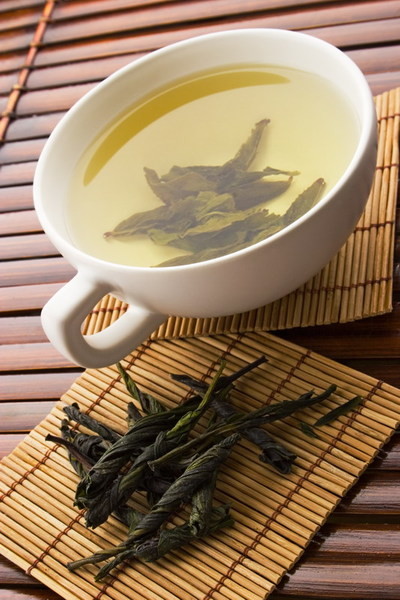 The basis of black and green tea is the samethe same: a green leaf. The only difference is in the degree of factory processing. Black tea goes through five technological operations: from withering and twisting to drying and blending, and green tea - only three, excluding the main - fermentation. During it, tea not only acquires a special color and aroma characteristic of black tea, but also loses a number of useful properties. In particular, during the fermentation process, a significant part of vitamin C evaporates from the leaves, and there is an order of magnitude less of it in black tea than in green tea. And as physiotherapists say, green tea in combination with other drugs stimulates hematopoiesis, improves oxidation-reduction processes, normalizes water metabolism, tones the heart muscles, improves the well-being of patients with atherosclerosis, helps with poisoning, serves as a good diaphoretic and diuretic for colds. It has already been proven that those who drink a lot of green tea are practically not susceptible to gallstone disease. From one tea bush, depending on the technological processing, a variety of varieties are obtained. There are intermediate types between black and green tea - these are red and yellow teas. They are also called semi-fermented. Moreover, the degree of fermentation is expressed more in red teas - they are closer to black varieties - than in yellow ones. The latter are not far from green varieties. For yellow tea, younger shoots are used, mainly buds, so it has a very pleasant, slightly tart taste and a strong infusion. Black, green, red and yellow - these designations must be indicated on the label.
The basis of black and green tea is the samethe same: a green leaf. The only difference is in the degree of factory processing. Black tea goes through five technological operations: from withering and twisting to drying and blending, and green tea - only three, excluding the main - fermentation. During it, tea not only acquires a special color and aroma characteristic of black tea, but also loses a number of useful properties. In particular, during the fermentation process, a significant part of vitamin C evaporates from the leaves, and there is an order of magnitude less of it in black tea than in green tea. And as physiotherapists say, green tea in combination with other drugs stimulates hematopoiesis, improves oxidation-reduction processes, normalizes water metabolism, tones the heart muscles, improves the well-being of patients with atherosclerosis, helps with poisoning, serves as a good diaphoretic and diuretic for colds. It has already been proven that those who drink a lot of green tea are practically not susceptible to gallstone disease. From one tea bush, depending on the technological processing, a variety of varieties are obtained. There are intermediate types between black and green tea - these are red and yellow teas. They are also called semi-fermented. Moreover, the degree of fermentation is expressed more in red teas - they are closer to black varieties - than in yellow ones. The latter are not far from green varieties. For yellow tea, younger shoots are used, mainly buds, so it has a very pleasant, slightly tart taste and a strong infusion. Black, green, red and yellow - these designations must be indicated on the label.
Just four minutes
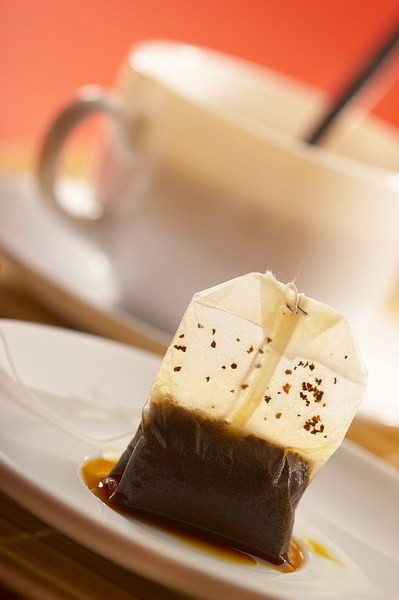 Everyone brews tea in their own way, but there are threegolden rules that not only make the drink tasty, but also preserve all its beneficial properties. First - bring the water to a boiling boil, second - warm the teapot with this boiling water, third - steep the tea in fresh boiling water for no more than 4 minutes. If you overexpose it - tannins begin to be released from the leaves, which spoil the whole bouquet, it becomes tart and bitter. To prevent this from happening, the tea must be filtered after brewing. Previously, this was done with a sieve, now many believe that it is more convenient to use tea in disposable bags for these purposes. It is not without reason that they account for about 10% of the tea consumed in Russia. There is a prejudice that bagged tea cannot be good. However, according to tea experts, tea bags are made from high-quality raw materials, but, nevertheless, at the consumer level, it can differ significantly in taste from the usual one.
Everyone brews tea in their own way, but there are threegolden rules that not only make the drink tasty, but also preserve all its beneficial properties. First - bring the water to a boiling boil, second - warm the teapot with this boiling water, third - steep the tea in fresh boiling water for no more than 4 minutes. If you overexpose it - tannins begin to be released from the leaves, which spoil the whole bouquet, it becomes tart and bitter. To prevent this from happening, the tea must be filtered after brewing. Previously, this was done with a sieve, now many believe that it is more convenient to use tea in disposable bags for these purposes. It is not without reason that they account for about 10% of the tea consumed in Russia. There is a prejudice that bagged tea cannot be good. However, according to tea experts, tea bags are made from high-quality raw materials, but, nevertheless, at the consumer level, it can differ significantly in taste from the usual one.
Should you stock up for a "rainy day"?
Tea is extremely hygroscopic and extremely vulnerableduring storage. It freely gives off, absorbs and retains moisture, as well as odors from the environment. How to store it to preserve its taste? The degree of preservation of tea largely depends on the tightness of the packaging, so the container in which it is stored must be tightly closed. Porcelain was and remains the ideal material for dishes, but dark glass, tin and foil are also suitable. It is believed that dry tea in glassware with a well-ground stopper can be stored in the dark for more than 10 years. But it is better, of course, not to do such experiments - if something goes wrong, the tea quickly ages. Store it outside the kitchen, in a place isolated from other products. Do not open tea when peeling vegetables, cooking meat, fish. The smell of toilet soap, perfume aromas, tobacco smoke have a very bad effect on its aroma. That is why it is better to store your daily supply of tea in a small jar, so as not to open a large one too often. Among the many secrets of proper tea storage, there is this: the smaller the distance between the lid of the teapot and the tea, the greater the chance of preserving the aroma of the brew.




